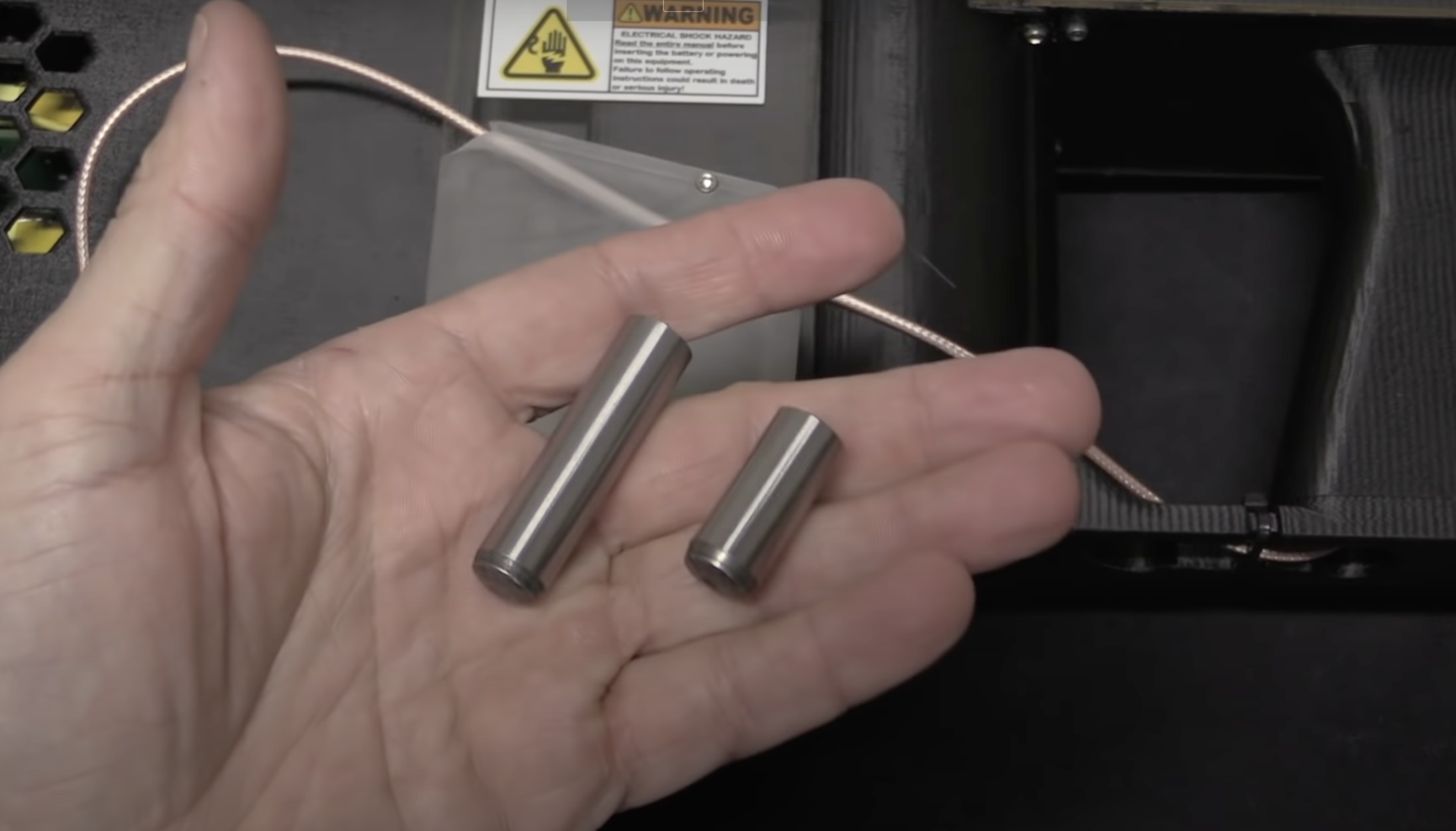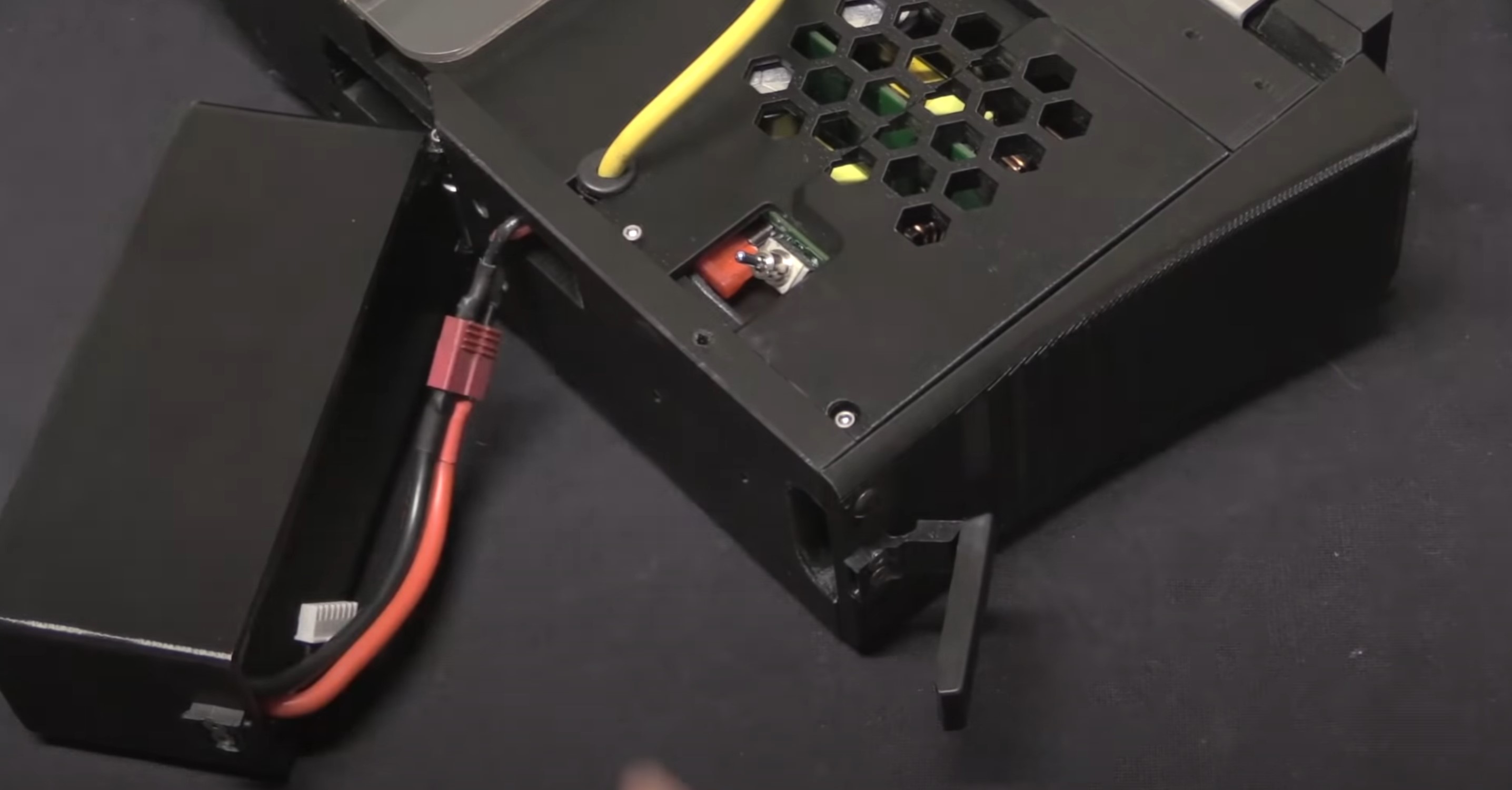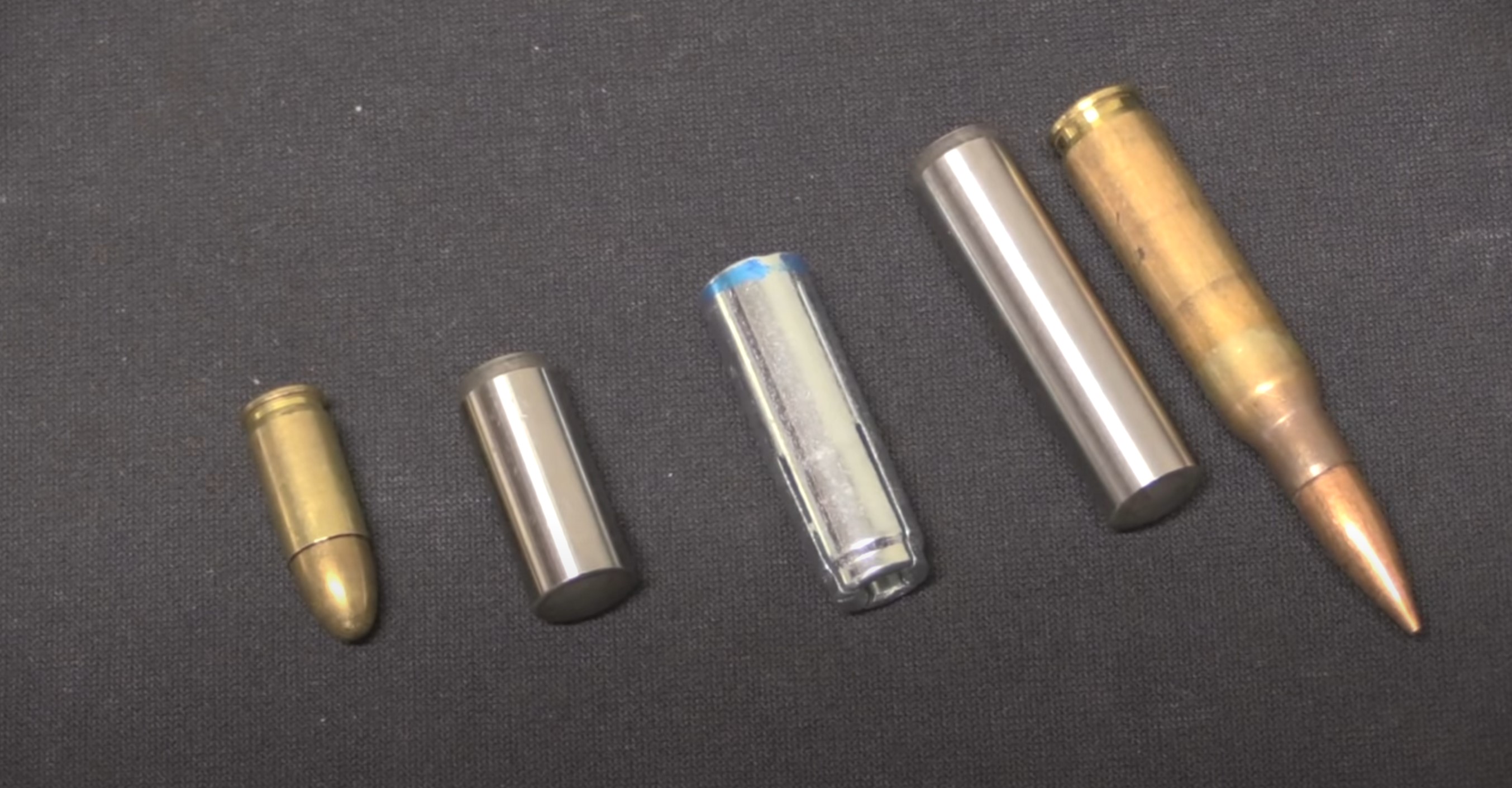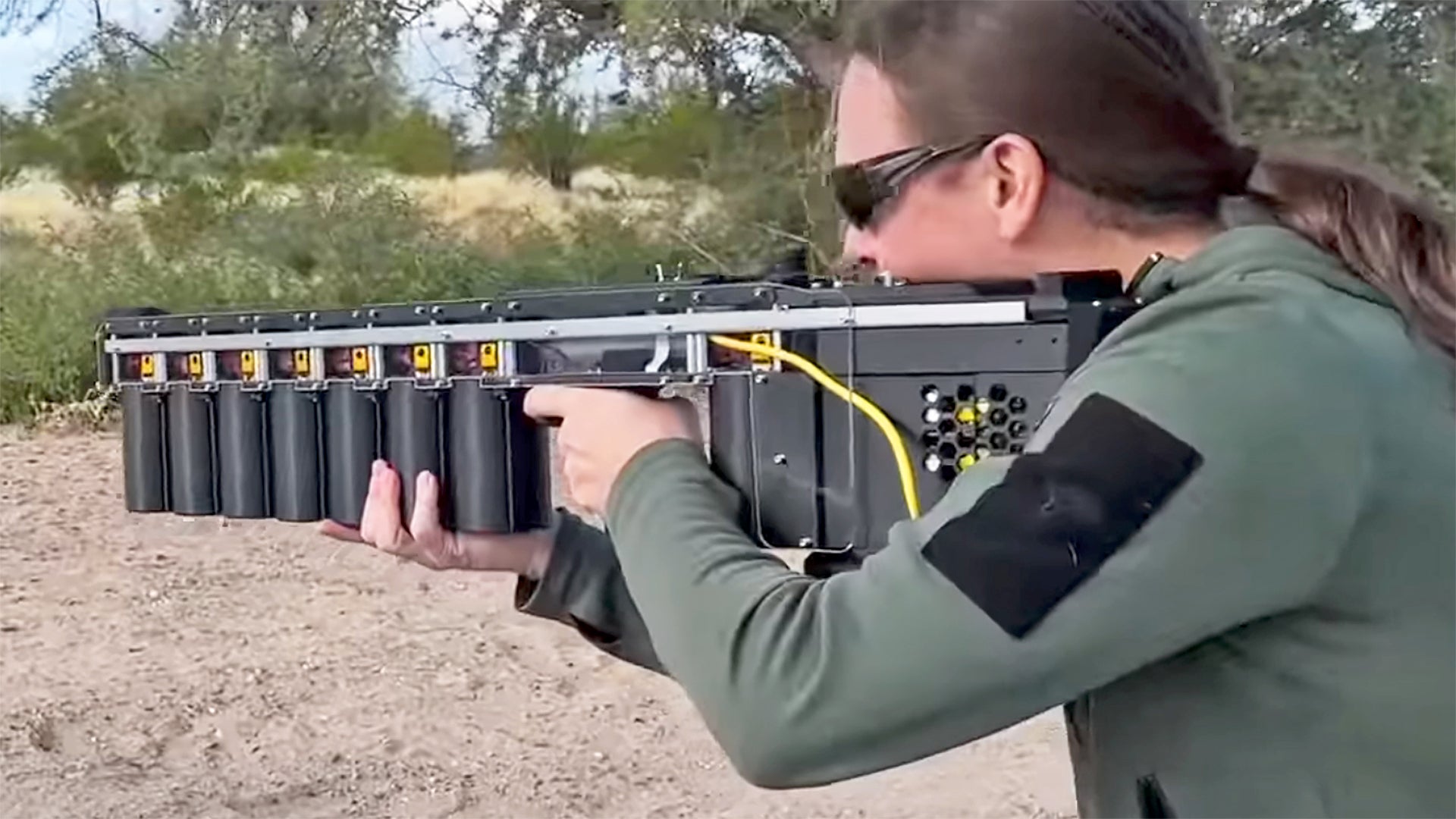A video review appeared online yesterday for the ArcFlash Labs GR-1, an electromagnetic Gauss rifle that surfaced last year when its manufacturer began taking pre-orders from the general public. We did a story about it then which you can read here. While the largely 3D-printed battery-powered rifle may at first glance appear to be almost toy-like, the review makes it clear that it is anything but.
The full video can be found on YouTube and was made by small arms expert Ian McCollum, who is a researcher for Armament Research Services and runs the popular blog Forgotten Weapons, the latter of which focuses on obscure, experimental, and prototype small arms. In the review of the GR-1, he walks through the Gauss rifle’s features and capabilities before taking it to a range for target shooting.

In a Forgotten Weapons blog post accompanying the video review, McCollum writes that the term ‘rifle’ is technically a misnomer in this case. Rifles are typically defined as having a spiraling (or helical) pattern of grooves cut into the inner wall of their barrels. The GR-1 is technically a smoothbore, as its barrel is smooth and lacks these grooves.
The GR-1 was first listed for pre-sale in August 2021 and was described as the “world’s first and only handheld Gauss rifle.” At the time, the price was listed as $3,375, which still appears to be the case according to the rifle’s website. The weapon uses a series of electrified coils to generate a magnetic field that accelerates ferromagnetic, or iron-rich, metal slugs with diameters under half an inch to speeds up to 75 meters per second, or 240 feet per second. The GR-1 feeds ammunition from a magazine that can hold up to 10 such slugs.

ArcFlash says the GR-1 features an “advanced capacitor charging system” that allows its 25v lithium-ion battery to rapidly charge the coils, allowing the ‘rifle’ to fire at full charge approximately every three seconds, and more rapidly at weaker charge levels. The weapon’s trigger system allows users to pre-charge the coils with a half-pull on the trigger before firing it with a complete pull.

The rifle’s stock, magazines, and battery holder are 3D-printed, while some sections appear to be acrylic plastic that has been bolted on. A small LCD screen displays the charge of the weapon’s battery, the charge of its capacitors, coil temperature, and “post-shot diagnostics,” according to its manual. Check out our prior coverage of the GR-1 for a full description of this “mass accelerator” weapon and its features.

The majority of the video review of the Gauss rifle walks viewers through its design, features, and how to operate the unconventional gun. Portions of the footage demonstrate of how to load magazines, change and charge the GR-1’s batteries, and how to adjust the desired energy of the coils.

McCollum also points out the addition of a built-in flashlight, green targeting laser, and a sliding rear stock that allows three different lengths of magazines to be inserted, each accommodating different sizes of slugs. By pulling a lock ring on the top of the rifle, the rear portion of the gun can be extended or shortened, changing the size of the receiver and therefore what size of magazine can be inserted.

The review points out several important safety features unique to the Gauss rifle such as making sure the battery is removed whenever not in use, and that due to the magnetic charge the GR-1’s coils produce, the rifle should not be used within 50 feet of anyone with a pacemaker or similarly sensitive medical device.
When on the range, McCollum demonstrates the GR-1 firing at a variety of energy levels. The Gauss rifle is surprisingly quiet when discharging, only producing a faint whine while charging and a mechanical ‘click’ whenever a round is fired.

At a few points during the video demonstration (roughly 19:15) the GR-1 misfires, forcing McCollum to have to tilt the rifle forward to allow the unfired round to fall out of the barrel. The reviewer states this is likely caused by feed issues that appear when the rifle’s magazine is close to empty. “The future can’t solve all of our problems, can it?” McCollum jokingly asks.
After a round damaged the wooden stand holding up the targets used in the review, McCollum points out that this shows how the GR-1 is capable of inflicting real damage. “This is a serious weapon,” McCollum says. “Yes, in terms of energy numbers, the muzzle energy is wimpy compared to a firearm, but this is absolutely potentially lethal, so it does need to be treated with the respect that one accords a proper firearm,” he says.
“That being said,” McCollum adds, “it is also super fun.”
When examining his target after testfiring the GR-1, McCollum found that some of the rounds tended to tumble in flight, likely due to the lack of rifling in the weapon’s barrel and low muzzle velocity. The grouping of hits on the target is fairly tight, though, indicating the Gauss rifle is fairly precise at least at the relatively close distances at which it was tested in the review.

While the GR-1 drew a few jeers when it first appeared last year, Forgotten Weapons’ review makes it clear that the Gauss rifle is indeed a lethal weapon, albeit an unconventional one. The review also drives home the fact that the GR-1, at least the specific one used in the review, is very much a prototype and still rough around the edges. Between the occasional misfires, the somewhat rough finish of the 3D printed stock, and the seemingly cobbled-together components, the concept is far from what one would consider a normal mass production item, at least in its tested form.
Still, for around $3,375, the GR-1 sure would make for an interesting conversation piece at the range.

Update 2/17/2022 –
The War Zone interviewed David Wirth, co-founder of ArcFlash Labs and the inventor of the GR-1. Read our interview for more on where the idea for the weapon came from and where the tech behind it could be headed in the future.
Contact the author: Brett@TheDrive.com
